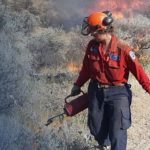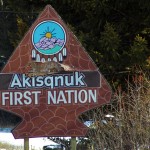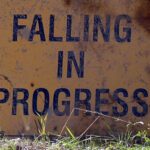Home »

17th annual Burn Awareness Week – Feb. 3-9
The following press release was forwarded to e-KNOW by Cranbrook Fire and Rescue Services’ Murray Robertson.
The BC Professional Fire Fighters’ Burn Fund’s 17th Annual Burn Awareness Week (BAW) program runs February 3 to 9.
Available online at www.burnfund.org, BAW teaches kids to be responsible for their own safety, and helps make their families aware of potentially harmful situations.
To encourage student participation, the Burn Fund runs the annual Burn Awareness Week Poster Contest.
Every entrant receives a participation prize and fifty students will win money for their elementary school or BC Ministry of Education sanctioned distance education facility. There are seven regional prizes, including a $1,000 Grand prize and six $500 Regional prizes. Regions are the Lower Mainland (three winners), Vancouver Island, Kootenays, Northern BC and the Okanagan (one winner for each area).
Forty-three students win runner-up prizes of $50 each for their school or distance education facility.
Complete prize details, rules and regulations are available online.
Public and private elementary schools in British Columbia, parents, students – anyone – can access the program online, which includes burn awareness safety tip information, student activity sheets, quizzes, coloring pages, and animated videos. The program is available in PDF format for easy download and printing.
Educational, fun and interactive, the program includes age-appropriate safety lessons intended for Pre-School (two to four year olds); K/Grade 1; Grade 2/3; Grade 4/5; and Grade 6/7.
Some lessons are also available in French, Cantonese, Mandarin, and Punjabi.
The Burn Hazard
A majority of Canadian parents aren’t aware of the scald and burn hazards in their homes. A survey by Safe Kids Canada found that 70 per cent of Canadian parents did not know that the most common cause of burn injuries to children is scalds from hot liquids, such as spilled hot drinks and hot tap water, rather than fire.
“Most adults realize that children need to be kept safe from fire or hot objects like the stove, but they do not realize that hot liquids are just as dangerous,” says Jason Milne, Burn Fund Director and Chair of the Burn Awareness Week Program. “Hot liquids burn just like fire.”
Each year an estimated 9,000 children in Canada visit hospital emergency room for burns, and almost half of these have suffered scalds from hot liquids. Close to 1,000 Canadian children are hospitalized each year for severe scalds and burns. Approximately 50 per cent of these children are hospitalized for scalds alone. (Source: Safe Kids Canada)
In British Columbia, more than 200 children are hospitalized for scald burns and thousands more are treated in emergency departments. Data collected over a five-year period in B.C. showed 453 children (birth to five years) hospitalized because of burns from hot liquids. During the same time frame, Children’s treated 343 young children for scald burns — 87 per cent of these injuries occurred at home, with an average of 40 per cent occurring in the kitchen and 9.3 per cent in the bathroom. (Source: BC Children’s Hospital)
Scalds from hot tap water are often the most severe. Children’s skin is thinner and more sensitive. A child’s skin burns four times more quickly and more deeply than an adult’s skin at the same temperature.
Most home hot water heaters in Canada are set at 60° Celsius (140° Fahrenheit). At this temperature, a child’s skin can burn in just one second.
The Burn Fund urges parents to study this important burn and scald safety information and to spend some time with their children to review the online Burn Awareness Program.
The Burn Fund is a registered charity established in 1978 by the BC Professional Fire Fighters Association. It provides life saving, life supporting, and life enriching services to the people in British Columbia. More than 3,800 professional fire fighters from fifty-three communities in British Columbia and Yukon dedicate their time and skills to support burn survivors and increase the public’s knowledge about fire and burn safety issues through the work the Burn Fund does with its Burn Awareness, Research and Prevention Programs.
The 17th Annual Burn Awareness Program is sponsored by RBC Foundation, Capilano Suspension Bridge, Global TV BC, Vancouver Courier Publishing, The Old Spaghetti Factory – Gastown, and Panago Pizza.
This past March the BC Professional Fire Fighter’s Burn Fund, in partnership with BC Children’s Hospital, launched an exciting new program called Too Hot for Tots!
The program was developed by Frances MacDougall, a clinical nurse who worked for many years on the Burn Unit at BC Children’s Hospital. After hearing many parents say they were not aware of the burn hazards in the home or how seriously their child could be injured, Frances developed a program for Early Childhood Educators to teach parents and caregivers of young children about burn and scald injuries. The goal is to; ultimately, reduce the number of these preventable injuries in British Columbia.
To order a free Too Hot for Tots! educational tool kit visit: http://www.burnfund.org/our_programs/too_hot_for_tots_info.php
BURN AWARENESS WEEK 2013 SAFETY TIPS
Hot water scalds are the leading cause of burns to young children. The vast majority of these burn injuries are preventable.
– When using water taps, turn COLD water on first. Then add HOT water and adjust the temperature. Reverse the order when turning water off: HOT water first, then the COLD water.
– Always test young children’s bath and sink water before using. When bathing children, never leave them unattended as they may turn on the hot water or slip in your absence.
– Be very careful when drinking HOT liquids, especially around children. At 60°C (140°F) it takes less than five seconds to get a third degree (full thickness) burn. Children and older adults, by virtue of their thinner skin, sustain severe burns at lower temperatures and in less time than an adult.
Playing with matches and lighters is one of the leading causes of fire deaths to young children. The vast majority of these burn injuries are preventable.
– Matches and lighters are tools for grownups, and not toys to be played with. Reinforce the concept that like power tools or a knife, the match is a tool with specific uses, such as lighting a stove or a candle, or for starting campfires.
– Discuss GOOD FIRES and BAD FIRES and how matches and lighters are to be used in a responsible manner.
– Discuss the importance of keeping all matches and lighters stored high out of the reach of young children. It reduces the temptation to experiment with fire. If need be, lock up matches and lighters.
– Discuss strategies for children on how they can get out of situations that involve fire setting and peer pressure. Define issues such as arson and the law, children taking responsibility for fire-setting actions, paying restitution and making good choices.
On average, every person in this country will experience at least two kitchen fires during their lifetime.
– Discuss the dangers around the stove. Teach children to never touch anything on the stove, or to open the oven. Children should not use stoves until they are old enough to safely handle items, reach cooking surfaces, and are mature enough to understand safety procedures in the kitchen.
– Instruct children to stay away from adults who are busy preparing food, carrying pots or using appliances. Adults should always turn pot handles inward (pointing toward the middle of the stove) when cooking. This will help prevent children from pulling hot food down on themselves.
– Children should be supervised while in the kitchen. Talk about safe places to play. The kitchen is not one of them.
– Discuss the dangers of climbing on counters or getting too close to hot appliances like the coffee pot, toaster, hot pots or pans and hot food.
– Kitchen and appliance safety is important in every household. Burns received in the kitchen are usually a result of scalds from hot foods or liquids, or contact burns from hot appliances. More fires start in the kitchen than any other location in the home.
– Teach and practice STOP, DROP & ROLL. If a child’s clothes catch on fire, they STOP where they are, cover their face with their hands (unless their hands are burning), DROP to the ground, and ROLL over and over until the fire is out.
Cooling the burned area will lessen the severity of the injury if the procedure is performed immediately following the burn incident.
– Children need to know the correct procedure for cooling a burn injury. Within seconds of a burn injury the burned area should be placed in, or flushed with, cool water. Keep the burned area in the cool water for 10 to 15 minutes. NEVER use ice, ointments or butter.
– If they are burned, tell children to immediately seek assistance from an adult.
– If the burn injury is severe, immediately seek emergency assistance. Instruct children how to dial 9-1-1, or your community’s local emergency number.
– Children have thinner skin than adults. They will sustain more severe burns at lower temperatures and in a shorter period of time.
– Exposure for just five seconds to water which is 60°C (140°F) can result in a full thickness or third degree burns, which would require hospitalization and skin grafts. (This is the temperature of the average home’s hot water as it comes from the tap.)
Burn Awareness Week Program








